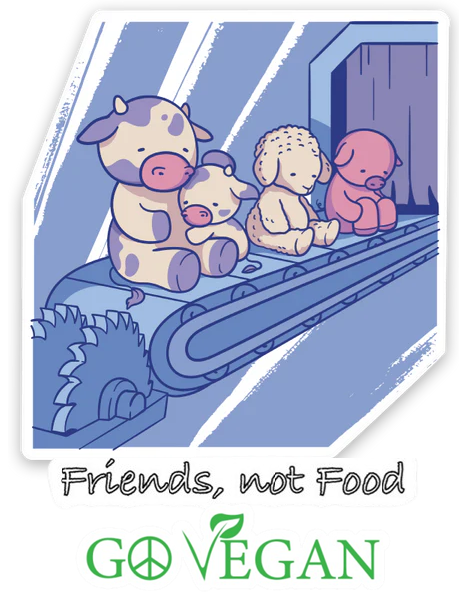In a world that prides itself on progress and empathy, the industrial treatment of animals stands as one of the starkest contradictions to our supposed values. While we cuddle our pets at home, billions of other sentient beings—equally capable of feeling pain, fear, and love—are confined, mutilated, and killed behind the closed doors of factory farms.
But this isn’t just an animal issue. As explored across Cruelty.farm , industrial animal agriculture is a web of cruelty, inequality, environmental collapse, and human suffering—one we participate in, often unknowingly, every time we sit down to eat.

🐐 Beyond Cows and Chickens: Forgotten Farmed Animals
When most people think of farm animals, they picture cows, pigs, or chickens. Yet millions of goats, rabbits, ducks, and geese are also exploited in silence. According to the section on other farmed animals , these species are often raised in even more neglected and brutal conditions.
Rabbits, for instance, are kept in cramped cages where they can’t stand upright or stretch. Goats are forcibly impregnated and separated from their kids for milk. Ducks, naturally aquatic animals, are raised in dry, filthy sheds, completely denied access to water. Their pain goes unseen, and their lives are reduced to profit margins.
🧪 Animals in Laboratories: The Price of “Progress”
Beyond the meat and dairy industry, animals are also used as tools in scientific experiments, from drug testing to cosmetics trials. The animal testing and alternatives section of Cruelty.farm outlines how millions of animals are subjected to invasive procedures, poisoning, isolation, and death—all in the name of “research.”
Yet, modern alternatives like in vitro testing, computer modeling, and human-relevant methods are not only more ethical but often more accurate. The persistence of animal testing reflects not scientific necessity, but outdated regulations and resistance to change.
👚 Skinned for Fashion: Animals Killed for Clothing
Another overlooked area of animal exploitation is the fashion industry. In the clothing section , Cruelty.farm reveals the brutality behind leather, fur, wool, and down. Animals like foxes, minks, alpacas, and sheep are raised or trapped for their skin, fleece, or feathers.
For example:
- Fur farms confine animals to wire cages before electrocuting or gassing them.
- Wool production often involves painful procedures like mulesing (removal of skin) without anesthesia.
- Leather production is a major byproduct of the meat and dairy industries, tying it directly to slaughter.
Each garment comes with a silent scream—yet sustainable, stylish, cruelty-free alternatives are widely available.
🚛 Transport and Slaughter: A Living Nightmare
Even before death, animals endure transportation systems designed with efficiency—not compassion—in mind. As explained in the transportation section , animals are crammed into trucks and ships for hours or days with no food, water, or rest. Many suffer from dehydration, heatstroke, injuries, or die en route.
And then comes slaughter.
In the slaughter section , details emerge about the horrific final moments these animals face—often while still conscious. Electric stunning, throat-slitting, gas chambers, or immersion in boiling water are common methods, depending on species and local regulations. These are not outliers. They are standard practices.
🎪 Exploited for Entertainment
Our exploitation of animals also extends to circuses, zoos, marine parks, and other forms of entertainment. In the entertainment section , animals are trained through fear, physical punishment, and deprivation. Elephants beaten with bullhooks, dolphins confined to sterile tanks, and tigers performing tricks under spotlights are just a few examples.
Behind every show is a life of isolation, pain, and psychological trauma. No animal performs because it wants to. They perform because they’ve been forced to.
🧭 A Moral Reckoning and a Way Forward
The ethical cost of how we treat animals is staggering—but not irreversible. A growing movement of compassionate individuals is demanding a better world—one that recognizes the inherent worth of every living being.
Cruelty.farm offers not just information, but hope. Through education, personal action, and policy advocacy, we can begin to dismantle the cruel systems that normalize suffering.
Here are a few ways to get started:
- Rethink your diet with plant-based alternatives
- Choose cruelty-free fashion and products
- Support animal-free entertainment
- Educate others through open, compassionate dialogue
- Advocate for laws that protect all sentient life
Because the measure of a society is how it treats its most vulnerable—including those who cannot speak for themselves.
🔗 Relevant links for more information:
- Other Farmed Animals: Goats, Rabbits, etc.
- Animal Testing and Alternatives
- Clothing and Animal Exploitation
- Animal Transportation
- Animals in Entertainment





Sunday, 23 November , 2025